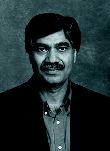
Although the theory works very well for low-temperature superconductors, usually metals or alloys with a critical temperature below 30 degrees Kelvin, the high critical temperatures of high-Tc superconductors (150 K is the present record) are hard to reconcile with standard theory.
"Of the 50 or so high-Tc materials discovered so far, all are copper oxides," says Xingjiang Zhou, a physicist at the Advanced Light Source (ALS) who has a joint appointment at the Stanford Synchrotron Radiation Laboratory. "After a dozen years we are still struggling to understand the mechanism of high-temperature superconductivity."�
|
|||||||||||||||||||||
But, says Shen, "whether the stripe phase is responsible for high-temperature superconductivity is at the heart of the current debate."
All the cuprate ceramics have a structure similar to the mineral perovskite: two-dimensional layers of oxygen and copper atoms alternate with layers of other atoms such as lanthanum or yttrium. The ubiquitous copper-oxygen layers are believed to be responsible for high-temperature superconductivity in some of the cuprates, although normally these layers are insulating.�
Zhou, Shen, and Zahid Hussain of the ALS, with other colleagues, used the High Energy Resolution Spectrometer (HERS)� on beamline 10.0.1.1 at the ALS—"state-of-the-art equipment," says Hussain, "specifically designed to study the electronic structure of complex materials, particularly the high-temperature superconductors."
Using angle-resolved photoemission spectroscopy, which measures the energy and direction of electrons knocked out of a sample by a beam of synchrotron light, the researchers probed the electronic structure of a cuprate known as Nd-LSCO (neodymium-substituted lanthanum strontium copper oxide), a model system of the stripe phase. The high quality single crystals essential for the success of the experiment were provided by Shin-ichi Uchida�s group at the University of Tokyo.
Cuprates are made more metal-like, and in some cases superconducting, by doping—adding elements which contribute extra electrons or create holes to carry negative or positive charges. Electronic properties vary with the amount of doping.
"With Nd-LSCO we found that at about one-eighth doping level, the picture that best fit our data was the stripe phase—charge carriers segregating themselves into one-dimensional lines," says Zhou. "These lines form boundaries between insulating regions; in the regions between the lines, electronic spins are arranged antiferromagnetically"—that is, the spin of each electron points opposite to those around it.
The electronic properties of Nd-LSCO showed remarkably complex behaviors. At high energies its Fermi surface (which describes the filling of a material�s uppermost energy level with electrons) plots as straight lines set at right angles—a feature which could not arise from the quasiparticles of traditional electronic theories.
On the other hand, clear evidence from low-energy excitations indicated that the charge carriers can also move in two dimensions, with motions perpendicular to the stripe lines—behavior much like the quasiparticles of established theory, although the expected two-dimensional effects are weaker.
Dutch theorist Jan Zaanen, who predicted the stripe phase, comments on this conundrum: "How can the electrons that are one-dimensional at high energies rediscover the two-dimensional world at low energies? Within established electronic structure theory, this appears to be a paradox."
Xingjiang Zhou suggests a possible solution: "The stripes appear stable at high energies, but at lower energies they may exhibit quantum fluctuations that give rise to two-dimensional effects."
Zhou adds that Nd-LSCO, chosen as a model system of the stripe phase and characterized by static stripes, "is itself a poor superconductor, but through understanding its electronic structure we may better understand its high-Tc relatives."
He and his colleagues have been investigating the larger class of lanthanum strontium copper oxides, LSCOs, without neodymium substitution, materials in which dynamic stripes have been proposed. And indeed, says Zhou, "we have found that the LSCO materials exhibit electronic structures very similar to the stripe phase."
Some materials in the LSCO system are good superconductors, with transition temperatures as high as 40 degrees Kelvin. In them, both the one- and two-dimensional natures of electronic structure appear at various dopings, further evidence that the stripe phase is intimately connected to high-temperature superconductivity—although just how remains an open question.
Says Zhi-xun Shen, "The apparent �love and hate� relationship between the charge-ordered stripe phase and the high-temperature superconducting state poses a major challenge to our understanding of these novel solids in particular—and to the modern theory of complex quantum system in general." — Paul Preuss �
|
Next > | |||

